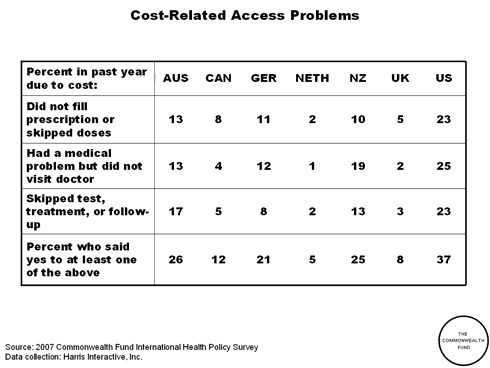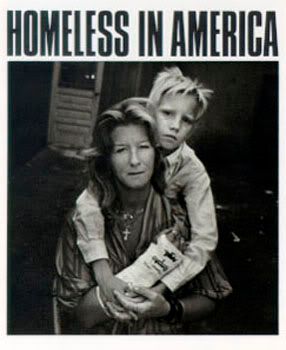The American people want to know if what our objective is with the war in Afghanistan, and President Obama is set to reveal the US' next move to the nation sometime next week.
But what are the problems that we face over in Afghanistan? What's our strategy?
A panel made up of experts ranging from retired lieutenants to current and former government advisers on foreign policy, tried to provide some insight into this complex matter at a day-long conference at NYU School of Law’s Center on Law and Security titled,
Counterinsurgency: America’s Strategic Burden.What is counterinsurgency also known as COIN?
R. Scott Moore, the current director for Strategic Initiatives in the Office of the Deputy Assistant Secretary of Defense for Partnership Strategy, in the
Small Wars Journal defines it as such:
“It is an integrated set of political, economic, social, and security measures intended to end and prevent the recurrence of armed violence, create and maintain stable political, economic, and social structures, and resolve the underlying causes of an insurgency in order to establish and sustain the conditions necessary for lasting stability.”
This is General McChrystal’s, the U.S Commander in Afghanistan, strategy in moving forward with the war addressed in a report to the President, requesting at least 30-thousand more troops to be deployed overseas to accomplish this 'endgame' of stability.
One of McChrystal main goals, according to Montgomery McFate, currently a Senior Social Scientist for the US Army’s Human Terrain System and part of the panel, is to move civilian support from insurgent groups to a legitimate government the US is trying to create.
But, as McFate points out, there are problems associated with institution building in “someone else’s country,” by those (the U.S) who are viewed by the Afghan’s as a “behemoth that has no idea what’s going on.”
And in order to do so, McFate says, “it has to be done in conjunction with locally existent institutions” rather than building and imposing our own.
Adam L. Silverman was the Field Social Scientist and Team Leader for Human Terrain Team Iraq, and has lectured on COIN, Iraq, and Afghanistan at the US Military Academy, agrees that there is a need to establish a legitimate government in order to reconcile social elements, which is at the core of much of the conflict.
But Silverman has one question: “Can that even be achieved?”
To make such an operation successful, Silverman advises that the main concentration be to “empower at the lowest level” by getting an understanding of the population in the context of the Afghan culture, because “what may be good for one culture, may not be for another.”
He says that the US has to “stop mirror imaging,” because “what’s good for us isn’t good for the rest of the world.”
It's the US persistent engagment of a "mirror imaging" type strategy, says Thomas Johnson, who has conducted research and written on Afghanistan and South Asia for over two decades and whose commentaries have appeared in media outlets such as BBC, CNBC, and the Wall Street Journal, that the problem lies, as seen in the recent controversy behind election of Hamid Karzai, the now president of Afghnistan.
The Afghan civilians question Karzai's “legitimacy," as well as the elections that brought him into power.
“The notion that the West can apply its rule of elections and law like a ‘coat of paint’ is simply wishful thinking,” Johnson said in his article with M. Chris Mason, titled
Afghanistan and the Vietnam Template.
Karzai, according to Johnson, was seen as illegitimate up to five years prior to his election as president, and the election itself lacked “any traditional or religious” legitimacy normally established in Afghan tribes, and thinks that the tribal leadership dynamic should act as a blueprint in establishing a legitimate and operative government in Afghanistan.
“Elections don’t make democracies; democracies make elections. It’s beyond our power to change an entire society,” and cultures are inherently resilient and resistant to change.
There are “real bureaucratic and institutional barriers” to the type of success the government and military would like to achieve in Afghanistan, according to Janine Davidson, who oversees the development of guidance for military campaign and contingency plans.
The problem, Davidson says, is with an overall ambivalence about the US’s role with Afghanistan among the American people.
“It’s hard to develop a strategy when there’s debate about whether we should be there in the first place.”
Dr. John Nagl, the President of the Center for a New American Security, agrees with Davidson, that we will need “continued American commitment” in order to be successful in Afghanistan.
“This era of persistent conflict will not end anytime soon,” and the mission has been “all but criminally neglected over the past 8 years.”
Nagl believes that our endgame of stabilization could be accomplished partly through establishing a strong Afghan National Army, which would require more US troops to recruit and train Afghan’s, and troops currently are being stretched almost beyond capacity.
Conrad Crane, director of the US Army Military History Institute at Carlisle Barracks, Pennsylvania, also agrees that the definition of legitimacy, as it pertains to Afghan culture, has more to do with security than anything else.
Dr. David Kilcullen, a globally recognized expert on counterinsurgency and counterterrorism thinks that a society has to feel safe enough to engage in political discourse, and building a civil society requires security. It is then that a legitimate government can be estalished.
Nir Rosen, a journalist that’s reported from Afghanistan, Pakistan, and spent over four years from Iraq, disagrees that more troops would establish the security Afghans are seeking.
“Our presence is part of the problem, and there’s more and more hostility” because of it and they are turning “more and more against our presence there.”
Michael Sheehan’s, known for his work in counterterrorism, peacekeeping, and law enforcement operations, view was similar to that of Rosen’s.
“We should be stepping back and allowing the host country to do their job.”
And when asked about the presence of the US in Afghanistan responded that the “US footprint should be as close to zero as possible.”
Sheehan argued that less is more in counterinsurgency, and at one point we have to ask ourselves, to what extent do we “contribute to the problem your solving?”
Sheehan brought up the capture of al-Quaeda leaders in West Pakistan as proof that a large presence isn’t necessary to achieve your “base objective.”
The president has steadily increased the troop presence in Afghanistan this year, authorizing the deployment of an additional 17-thousand troops in Feburary.
This year has also marked the highest in military casualties since the start of the war, with 297 deaths, 155 in 2008, and 12 in 2001.
President Obama’s address to the nation regarding his “endgame” and the US’s next move forward is set to take place at some time next week, and the American people just wait in hopes for an answer or a solution in what appears to be, as Adam Silverman pointed out:
“By and large out of their area of expertise.”



